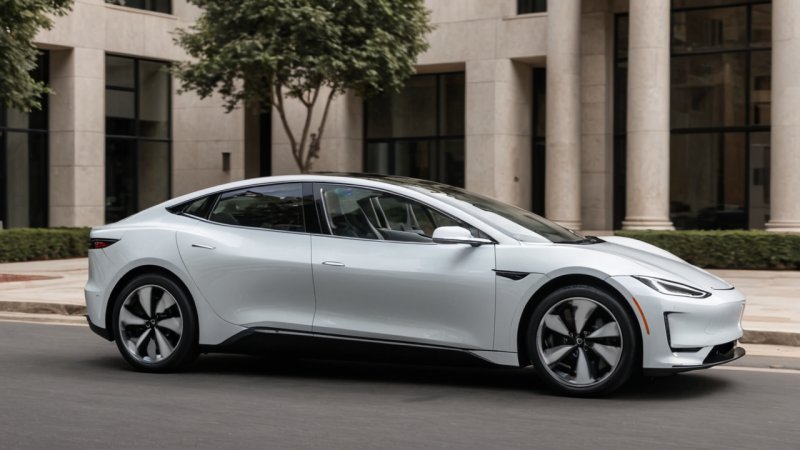The automotive landscape has undergone a seismic shift in recent years, primarily driven by the advent of electric powertrains. As traditional gasoline engines face scrutiny over their environmental impact and efficiency, electric vehicles (EVs) powered by electric powertrains have emerged as a viable alternative. This article delves into the multifaceted effects of electric powertrains on vehicle performance, analyzing their influence on acceleration, handling, energy efficiency, and the driving experience. By the end, readers will gain a comprehensive understanding of how electric powertrains are reshaping the future of automotive technology.
Understanding Electric Powertrains
Before we explore the implications of electric powertrains on vehicle performance, it’s essential to understand what they are and how they differ from traditional internal combustion engines (ICEs). At their core, electric powertrains consist of an electric motor, a battery pack, and associated control systems. Unlike ICEs, which convert fuel into mechanical energy through combustion, electric motors utilize electrical energy stored in batteries to produce motion. This fundamental difference leads to several performance advantages.
Components of Electric Powertrains
- Electric Motors: The heart of the electric powertrain, these motors convert electrical energy into mechanical energy. They provide instant torque and can deliver power smoothly and efficiently.
- Battery Packs: These are the energy storage units for electric vehicles. The size and technology of the battery pack significantly affect a vehicle’s range and performance.
- Control Systems: These systems manage the flow of electricity to the motor and other components, optimizing performance based on driving conditions and user input.
Acceleration and Power Delivery
One of the most noticeable impacts of electric powertrains on vehicle performance is in acceleration. Electric vehicles can achieve impressive acceleration times, often outperforming their gasoline counterparts. This section explores the reasons behind this phenomenon.
Instant Torque
Electric motors deliver power differently than traditional engines. With electric powertrains, torque is available immediately, allowing for rapid acceleration from a standstill. For example, the Tesla Model S can go from 0 to 60 mph in just 2.4 seconds, a feat that many supercars struggle to achieve. This instant torque not only contributes to faster acceleration but also enhances the overall driving experience.
Reduced Weight
While battery technology is improving, electric vehicles often have a lower weight distribution compared to traditional vehicles. This is due in part to the compact nature of electric motors and the central placement of battery packs, which can lower the vehicle's center of gravity. This weight distribution plays a crucial role in enhancing traction and stability during acceleration.
Handling and Stability
The handling characteristics of a vehicle can significantly impact driving enjoyment and safety. Electric powertrains contribute to improved handling in several ways.
Lower Center of Gravity
The placement of heavy battery packs within the vehicle chassis leads to a lower center of gravity. This design reduces the likelihood of rollover and enhances cornering stability, allowing for better control during sharp turns.
All-Wheel Drive Systems
Many electric vehicles come equipped with all-wheel-drive (AWD) systems that can distribute torque to all four wheels. This feature enhances traction and stability, especially in adverse weather conditions. For example, the Audi e-tron utilizes an advanced AWD system that allows for superior performance on slippery surfaces.
Energy Efficiency and Range
Energy efficiency is a critical aspect of any vehicle’s performance. Electric powertrains offer several advantages in this area as well.
Regenerative Braking
One of the innovative features of electric vehicles is regenerative braking, which captures energy typically lost during braking and redirects it to recharge the battery. This process not only enhances overall efficiency but also extends the vehicle’s range. For instance, the Nissan Leaf incorporates regenerative braking to maximize energy use.
Optimized Energy Management
Electric powertrains utilize advanced software to optimize energy management. This includes adjusting power delivery based on driving conditions, which can lead to improved efficiency and range. Many electric vehicles provide real-time feedback to drivers, helping them maximize their driving efficiency.
The Driving Experience
Beyond raw performance metrics, the overall driving experience is where electric powertrains truly shine. The absence of engine noise, vibrations, and the smoothness of electric motors contribute to a unique driving sensation.
Quiet Operation
Electric vehicles operate much more quietly than traditional vehicles, creating a serene driving environment. This quietness enhances the overall experience, making long drives more enjoyable and reducing fatigue.
Advanced Technology Integration
Electric vehicles often come equipped with cutting-edge technology that enhances the driving experience. Features such as adaptive cruise control, lane-keeping assistance, and advanced infotainment systems are becoming standard in many electric models. This integration not only improves safety but also adds to the overall enjoyment of driving.
Challenges and Considerations
While electric powertrains offer numerous benefits, there are challenges and considerations that potential buyers should be aware of.
Range Anxiety
Despite advancements in battery technology, range anxiety remains a concern for many potential EV owners. However, with the growing network of charging stations and advancements in battery capacity, this concern is gradually diminishing.
Charging Infrastructure
The availability of charging infrastructure can influence an electric vehicle's practicality. While urban areas are seeing an increase in charging stations, rural areas may still lag behind. Prospective buyers should evaluate their driving habits and charging options before making a purchase.
The Future of Electric Powertrains
The future of electric powertrains looks promising, with ongoing innovations set to enhance vehicle performance further.
Battery Technology Advancements
As battery technology continues to evolve, we can expect improvements in energy density, charging speed, and lifespan. Solid-state batteries, for example, are being researched as a potential game-changer in the industry.
Integration with Smart Technology
The integration of smart technology with electric powertrains is another exciting prospect. Features such as vehicle-to-grid (V2G) technology, which allows vehicles to send energy back to the grid, could revolutionize how we think about energy consumption in transportation.
Conclusion
Electric powertrains are redefining vehicle performance and the driving experience. Their instant torque, enhanced handling, and energy efficiency provide significant advantages over traditional internal combustion engines. While challenges remain, the benefits of electric powertrains are clear, and as technology continues to advance, the future of electric vehicles looks brighter than ever. Embracing electric powertrains not only enhances performance but also aligns with a more sustainable approach to transportation, paving the way for a cleaner and more efficient automotive future.






